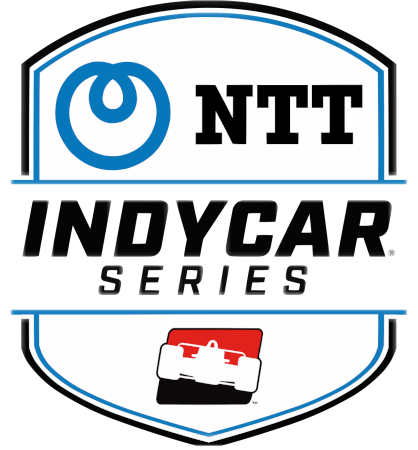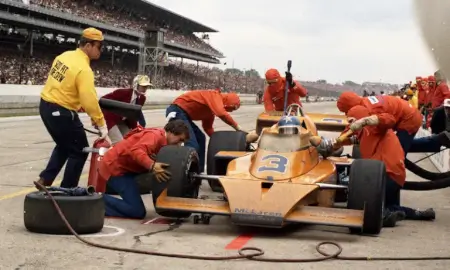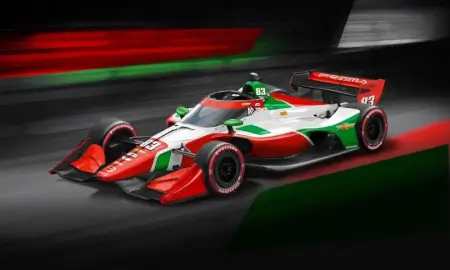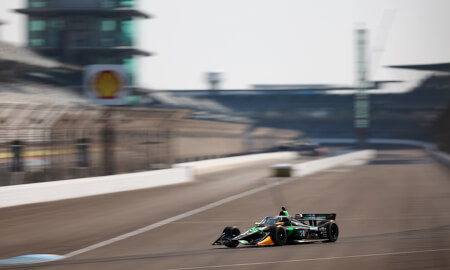April 22nd 2024
Brown joins IndyCar marketing taskforce
Penske Entertainment CEO Mark Miles has recruited McLaren Racing CEO Zak Brown to be part of a small new taskforce designed to help the IndyCar Series improve its marketing efforts.
More accurately, and humorously, Miles stated as such in an interview before the outreach to Brown had actually been made. The oversight was handled with grace.
“I’ve read that,” Brown said in a wry manner. “I’ve since spoken with him. And I’m happy to help because I definitely have lots of opinions on opportunities I think we’re missing to make the sport much better and to capitalize on what I think the sport can become.”
As a young driver on the American and European junior open-wheel scene, Brown stood out among his rivals with his ability to attract sponsors. After moving into the business side of racing with the formation of the ultra-successful Just Marketing Incorporated, his savvy is what drew the interest of McLaren where he’s led the Formula 1 team while finding partners who’ve infused the company with immense investments.
Conversely, Penske’s core strength have been demonstrated in business-to-business deals which, for the most part, have required minimal marketing on behalf of the series’ owner. Recruiting Brown and other sharp marketing minds to address IndyCar’s greatest longstanding weakness is a smart move, and as the Los Angeles native said, he’s not lacking in opinions or ideas where the series can make vast improvements.
“I think there’s a lot of room for optimizing the race schedule,” Brown said. “I think some of these most recent changes are OK. Having a non-championship race once the season started…preseason…testing…race…might make a lot more sense. I think it’s unfortunate to lose Texas, which is a great market. I think the doubleheader thing, sponsors don’t view it as two races. It’s one weekend, so I don’t think doubleheaders is the solution to expanding the race calendar.
“I think we need some, and I’ve said this for a while now, new cars. I think we shouldn’t be introducing new technology in the middle of the season. I think that’s high risk for a little reward with hybrids coming. Why don’t we get this season done and out of the way? What’s the rush to do it with seven eight races to go? Wouldn’t it just be better to get all the testing done and give all the teams a chance to properly modify their equipment and come at it in ’25?
“I think we need some, and I’ve said this for a while now, new cars. I think we shouldn’t be introducing new technology in the middle of the season. I think that’s high risk for a little reward with hybrids coming. Why don’t we get this season done and out of the way? What’s the rush to do it with seven eight races to go? Wouldn’t it just be better to get all the testing done and give all the teams a chance to properly modify their equipment and come at it in ’25?
“I think the drivers are the stars and we need to put them on a pedestal. And proper podiums. That might sound like a small thing, but if you look at the attention that podium ceremonies get you in the imagery that comes from that…
Brown was among the many who felt embarrassed for the series and its drivers who stood on a cut-rate podium at The Thermal Club’s $1 Million Challenge.
“I thought that was not adequate for the level of IndyCar,” he continued. “I think you need to invest. And then I think these can be sponsored — a proper podium. Now, sometimes that might mean you have to invest and then go get the sponsors and just wait for the sponsor, but I think so much social media and imagery and exposures created from the podium, to not have proper podiums in a missed opportunity.”
Formula 1’s broadcasts are rich with analysis and strategy projections that engage viewers on a deeper level. It’s another area where Brown would welcome changes for IndyCar.
Formula 1’s broadcasts are rich with analysis and strategy projections that engage viewers on a deeper level. It’s another area where Brown would welcome changes for IndyCar.
“I think, with whoever the new broadcaster is — whether that’s the same broadcast or whatever our new TV deal is — I think we can do a better job of the way we show the races,” he said. “I think getting into predictive scenarios (would be good.) I hear a lot of, ‘They’re on red tires.’ Unless you’re really avid fan, and I consider myself to be an avid fan, I’d like to have next-level of information, which is, ‘Soft tires, so they’re going to be a half a second lap faster for eight laps and if Pato doesn’t catch Josef by lap 8, his tires are going to fall off and the strategy wouldn’t work.’
“So helping fans understand how races play out and strategies behind them, because I don’t think that’s necessarily always clear, I think there’s room for improvement.”
Car counts, charters, and IndyCar’s overall value was another major area of concern for Brown.
“We need to make sure that we focus on quality over quantity,” he said. “I think the NASCAR show is no worse off by having a smaller car count than the magical ‘you have to have 43 cars.’
“We have 20 cars in Formula 1, 27 (Indy) cars, 29 cars, create a lot of red flags at Nashville, create a lot of yellows in Laguna Seca. So I think we need to be very focused on quality over quantity on what we do. I don’t think the fan pays too much attention after about 20 cars. So what are those other 6, 7, 8, 9 cars bringing to the table other than a lot of times creating red flags?
“So I think there’s lots of opportunities for improvement. I think the schedule would really need to get into the East Coast. I think there’s two things to play for growing the value of the sport. There’s cash generative, but then there’s also franchise value.”
Having brought McLaren into the all-electric Formula E series ahead of the 2022-23 season, Brown wonders how a 10-year-old series with a modest fan base is worth so much more than IndyCar whose roots extend back more than a century.
“If you look at what Formula E is worth, and I don’t know what number IndyCar was purchased for — if you believe the rumors of 300 million-ish — but on the finance side, when Formula E is trading at twice that, with all due respect to Formula E, it does not have the history of IndyCar, there’s a lot of value creation that I think is a massive opportunity for growth,” he said.
“So I think you can take a view, and you can invest in doing street races, where the street races themselves might not make the money, or maybe we could potentially lose a few bucks, but if that helped (improved) the valuation of IndyCar and you limited the amount of teams and therefore had a scenario if you had more demand and supply because you’re limited to — pick a number — 22 teams, you can create a dynamic where IndyCar racing is worth a lot more because of the demand; you get a more lucrative media deal.
“You have more sponsors that come in, therefore more teams that want to come in. But if you’re limited on teams, you then have to create franchise value. So I think that’s what we as an industry need to be looking at.”













